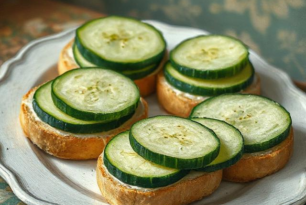There’s a unique kind of dread that creeps in when the summer sun starts to bear down—when sidewalks shimmer, car seats scorch, and the air feels like soup. For people living with obesity, this seasonal shift can feel like entering a different planet entirely. The heat isn’t just uncomfortable—it’s relentless, oppressive, and potentially dangerous.
But summer doesn’t have to be a season of hiding indoors or waiting for dusk to step outside. With some preparation, practical strategies, and a bit of body-kind awareness, surviving—and even enjoying—the heat becomes a lot more manageable.
The Science Behind the Sweat
Bodies with higher fat percentages hold onto heat more effectively. Fat acts as insulation—great in the winter, a bit of a curse in July. People with obesity also tend to have a reduced surface-area-to-body-mass ratio, meaning there’s less skin per pound to release heat through sweat. On top of that, some may deal with mobility issues, medications, or chronic conditions that make thermoregulation even tougher.
What that means: your body isn’t malfunctioning, it’s just fighting harder to keep you cool.
Dress to Decompress
Say goodbye to heavy, clingy fabrics. Loose, breathable clothing in natural fibers like cotton or linen lets air circulate and keeps moisture from sticking to your skin. Moisture-wicking athletic gear, which pulls sweat away from the body, is another great option—especially for people who deal with chafing in high-friction areas like the inner thighs or underarms.
Speaking of chafing: anti-chafe balms, powders, or even just a swipe of deodorant in high-rub zones can be a game-changer. No one should have to choose between mobility and comfort.
Hydration Is More Than Just Water
Yes, drink water—lots of it. But also think about electrolytes. When you sweat (and chances are, you’re sweating a lot), your body loses sodium, potassium, and magnesium. Coconut water, sports drinks with low sugar, or even a pinch of salt in your water bottle can help replenish what’s lost. Dehydration hits harder when you’re already trying to keep your body temperature regulated.
Time Your Movement
For those who enjoy being active—or have to be outside for work or errands—timing is everything. Early mornings or later evenings offer a window where the sun is less aggressive. Look for shaded walking paths, air-conditioned indoor gyms, or even a dip in a pool. Swimming is an incredible low-impact exercise that keeps you cool while being easy on joints.
And if you can’t avoid the mid-day heat? Carry a handheld fan, wear a cooling towel around your neck, wear a wide-brimmed summer hat, or keep a spray bottle with chilled water for a quick refresh.
Cool Down Like a Pro
Sometimes, the simplest tricks work best. A cold shower or even just running cold water over your wrists and feet can help lower core temperature. Keep your bedroom cool by blocking out the sun and the heat with blackout curtains during the day and setting up fans at night to circulate air. Cooling mattresses or pillows might be worth the investment if summer sleep becomes a sweaty ordeal.
It’s Okay to Stay Inside
There’s a weird guilt that sometimes comes with avoiding the outdoors in summer, as if we’re wasting some national treasure. But rest is resistance, especially in a world that isn’t always built with every body in mind. If staying inside with a fan and your favorite show is what keeps you safe and sane—embrace it.
Final Thoughts
Surviving the summer heat as a person living with obesity isn’t about toughing it out. It’s about working with your body, not against it. It’s about finding the hacks, tools, and mindsets that protect you.

Melting Point: How to Survive the Summer Heat



